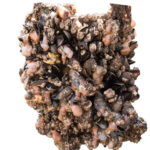Evonik wants to render ship hulls invisible to microorganisms – and thus protect vessels against fouling
Evonik is working on a solution to problems caused by biofouling with new environmentally friendly paints that counteract fouling. The[ds_preview] coating is designed to make small organisms believe to be confronted with water where there is actually a hull. As a result, related species refrain from establishing on the hull surface.
»Biofouling is one of the last unsolved problems in the coatings industry. So far, the optimal solution for efficient and at the same time environmentally friendly ship painting has not yet been found. That’s why antifouling paints are one of the core topics of our new competence center ›Smart Surface Solutions‹,« explains Stefan Silber, Head of Innovation Management Coating Additives in the Resource Efficiency segment of Evonik. There, the experts’ work is not just about ship paints but also anti-icing, anti-microbial coatings or dirt-repellent surfaces.
To ward off biological growth on ship hulls, the Evonik scientists combined a water-repellent (hydrophobic) silicone with a water-loving (hydrophilic) polymer. This results in amphiphilic polymers, that is, water-loving and water-repellent areas alternate. The water-loving areas attract the water around the hull. This forms a kind of water cover around the polymers camouflaging the hull against organisms. The change with the water-repellent areas also confuses the microorganisms, according to Evonik. They no longer recognize the surface undoubtedly, can no longer clearly differentiate the hull from seawater. In this uncertainty they should rather stay away from the hull.
If the microorganisms still try to settle on the surface, a second defensive property of the hydrophobic area should pay off: the non-adhesive effect. This results from the basis for the new solution against biofouling, the silicone hybrid resin Silikopon EF from Evonik’s portfolio. It complicates the settlement of the organisms on the hull from the beginning. This is achieved by the very low surface tension and the extremely smooth surface of the silicone, which leads to so-called »easy-to-clean« properties. The few organisms that succeed in clinging to the hull should be washed off by the water flow at low speeds again.
»We are thus using a proven product in a new way and at the same time expanding the expertise of Evonik. This enables us to develop new solutions for paints that protect ships from fouling – without directly attacking the organisms,« says Silber. According to Katrin Roland, head of the development department for anti-fouling raw materials, the amphiphilic binders show good »foul release« and »easy-to-clean« properties even without the use of biocides.
»The effectiveness could be determined in self-developed laboratory tests and static seawater tests. So far, neither fully formulated coatings have been tested nor dynamic properties,« says Roland. Therefore, a final statement on the duration of effectiveness is not possible. However, the researchers are already working together with customers from the coatings industry on coatings based on them. The binder developed by Evonik serves as raw material for foul-release or anti-fouling paints. »Our customers will be able to formulate conventional paints that can be applied in the usual way,« says Roland.
The company is confident the new hybrid coatings will render possible to extend the time span between two new coatings in the future. This would allow shipping companies to reduce both the negative effects of biofouling and higher fuel consumption, as well as the cost of repairs.


















